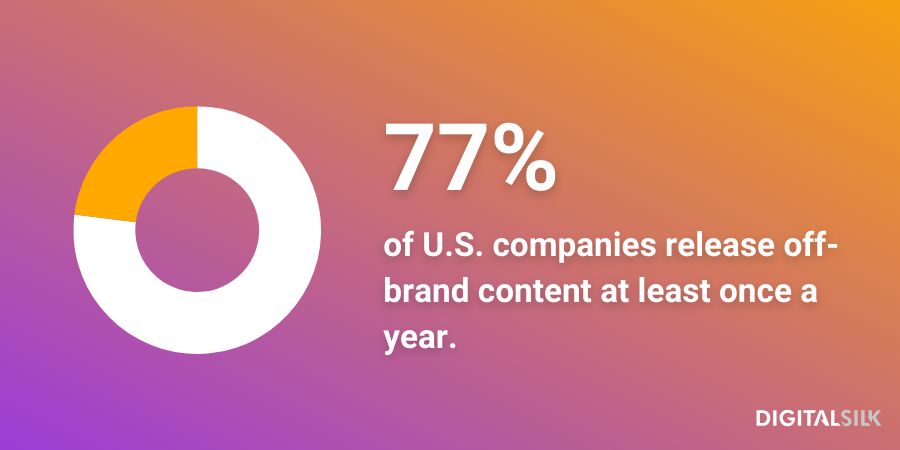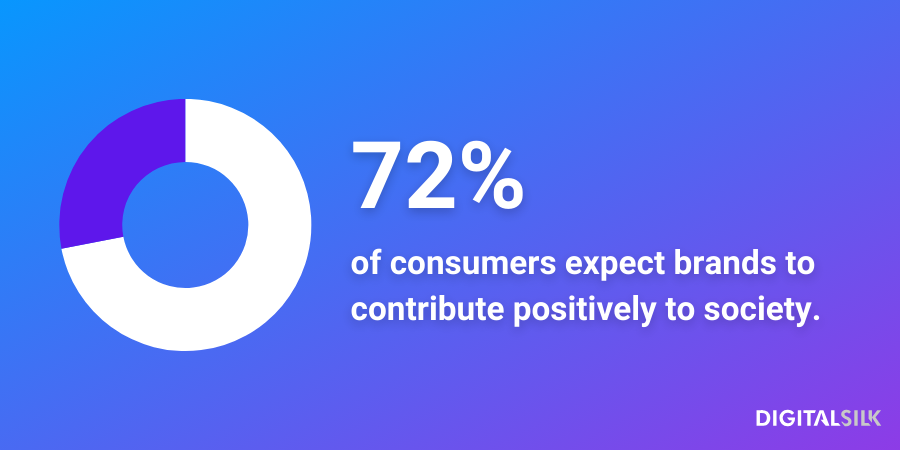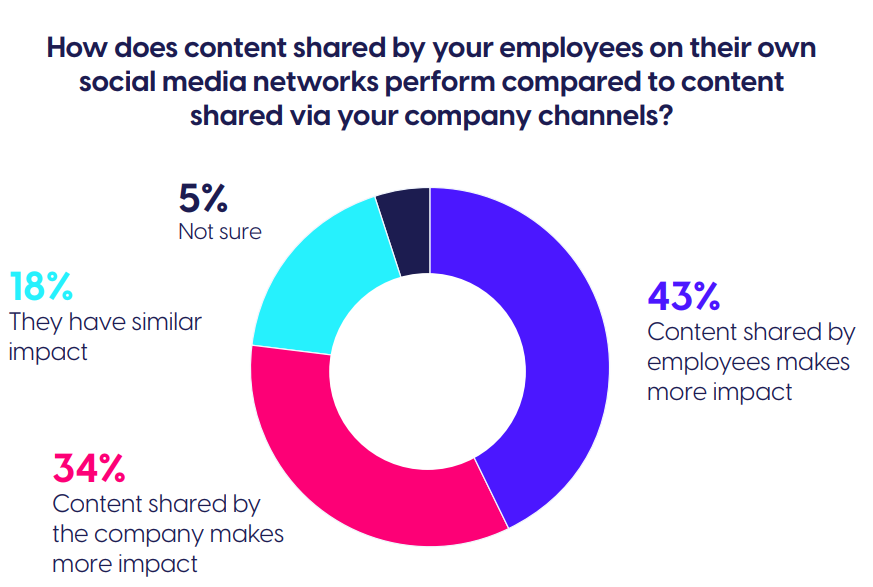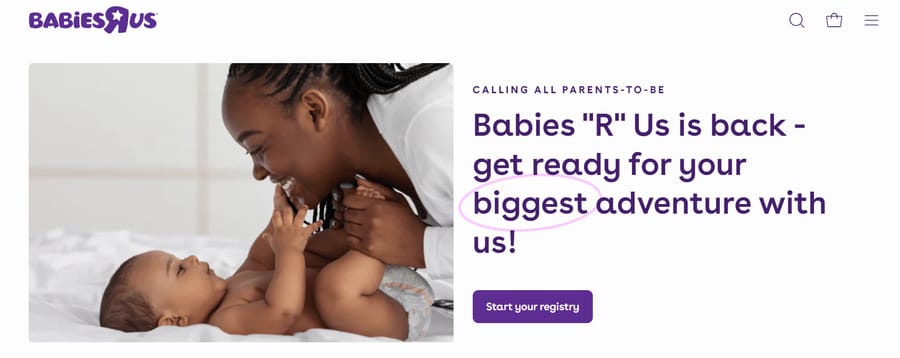What do you associate with Coca-Cola?
If it’s anything to do with happiness, friendship and relaxation, you can be sure that your perceptions have been shaped by the brand’s bid to connect a can of coke with positive feelings.
By implementing well-thought brand strategies and managing external factors, your brand can also build a positive brand association.
We outline how to shape your brand associations and showcase popular examples below.
We deliver custom branding solutions. Request a Quote
What Is Brand Association?
Brand association refers to the mental connections made in people’s minds between your brand and certain attributes, values or experiences.
It plays a vital role in shaping perceptions of your brand and influencing consumer behavior by crafting a distinct identity and emotional resonance for your brand.
By shaping positive associations with your brand, you can build customer loyalty within a desired audience, while also driving sales by making sure your brand is the first a consumer connects with a range of positive thoughts.
Take Happy Egg, the organic egg production and sales company, for example. Shoppers are willing to consistently pay more for their free-range eggs as they associate the purchase with both improved animal rights and better taste thanks to positive messaging and image cultivation.
Types Of Brand Association
Brand associations are unique for every business, but some of the common types of brand association include:
- Attribute-based association: The physical and mental characteristics your audience associates with your brand, such as luxury products, high-quality services or a certain brand color
- Benefit-based association: The unique selling point (USP) of your brand in the eyes of your audience, such as fast response times or carbon neutral commitments
- Personality-based association: The individuals or brand personality your audience links to your business through a celebrity endorsement or a specific brand voice
#1. Burberry’s distinctive tartan-check pattern is an example of …
#2. Nespresso’s elegance endorsed by George Clooney is an example of …
#3. Patagonia’s sustainability initiatives are an example of …
Results
Congrats, you passed!
Looking to build your own positive brand associations? Reach out to our branding team to receive a custom project proposal.
Better luck next time!
Looking to build your own positive brand associations? Reach out to our branding team to receive a custom project proposal.
How To Build A Positive Brand Association
Building a positive brand association requires a range of ongoing, proactive branding initiatives.
There are five steps to follow:
Step 1. Start With A Brand Strategy
A brand strategy is the focal point of all your brand activities. It helps you define the core aspects of your brand, including your unique value proposition (UVP), mission, vision and brand values.
By investing time in your brand strategy, you can align your brand with those you aim to build a positive connection with — your target audience.
To create a brand strategy:
- Define your values: Understand and articulate your brand purpose by asking why your brand exists, what you want to achieve and how you wish to get there. This lays the foundations for the positive brand image you wish to be associated with.
- Research your audience: Research and segment your audience based on various factors like location, age, gender, decisions and behaviors and compile these results into user personas that act as fictional representations of your audience members. This way, you can make informed decisions that will resonate positively with your chosen target audience.
- Tell your brand story: Outline your style of messaging and design in a way that harnesses authenticity through your tone of voice and visual elements. In turn, your audience will associate your brand and visual identity with authentic values that connect with their own behaviors, opinions and so on.
Step 2. Ensure Brand Consistency
Did you know that 77% of U.S. companies release off-brand content at least once a year?
These brands risk creating an inconsistent representation of their brands, which can dilute trust and limit positive impressions.
By ensuring your brand identity is upheld consistently across channels and campaigns, you work to foster positive perceptions of your brand.

To ensure brand consistency across channels:
- Audit your brand touchpoints: Analyze your brand messaging, logo and visual identity across all your brand channels to uncover potential inconsistencies.
- Monitor your branded campaigns: Connect the branded elements of your existing and future campaigns to boost awareness and trust while removing unwanted associations.
- Use a brand book: Acting as a one-stop guide for all important elements of your brand, a brand book provides guidelines to help those responsible for building your brand. By referring to your brand guidelines, they can create consistent campaigns that drive trust in your brand and recognition of your brand values.
Step 3. Match Your Words & Actions
Heard of the term “Actions speak louder than words?” This should be your mantra when forming positive associations with your brand.
Your brand values and messaging are important in making an initial connection with your audience but to build lasting associations you need to back them up with actions.
For example, 72% of surveyed consumers expect brands to contribute positively to society. While most brands claim to have a positive impact on society, only those who back it up with actions, like Patagonia’s sustainability pledges, become intertwined with the values they promote.

To match your words with actions:
- Quality assure (QA) your products and services: Run tests to check the qualities of your products and services, such as durability, reliability and so on. This way, you can discover where they match or fall short of your brand promises and learn which attribute-based associations your solutions support.
- Ask questions about your brand: Create a list of questions about your brand’s ethics, corporate social responsibility (CSR), equality and performance. For example, what makes your brand sustainable other than the words you say? This way, you can single out inconsistencies and deliver your brand promises to drive positive associations.
Step 4. Consider Employer Branding
Your employees are front line representatives of your brand.
In fact, 43% of professionals in Europe believe that social media content shared by employees on company channels has the most impact—compared to just 34% for the company itself.
By creating an employer branding strategy to attract and retain great talent, you’ll in turn build strong relationships with clients and customers to foster positive, long-term associations with your brand.

To achieve employer branding success:
- Research your employee value proposition (EVP): Conduct first-hand feedback sessions and analyze what former employees are saying about your brand. Using this knowledge, introduce new benefits, values or extras to shape your EVP in the direction you wish.
- Focus on your talent: Train, compensate and keep your workers happy to build positive perceptions of your brand from within and produce positive, word-of-mouth promotions of your brand values.
- Promote your values: Spread your company values across channels and content-types, including social media, career events and advertisements, to boost knowledge of your EVP and drive positive associations with your brand.
Step 5. Have A Crisis Management Plan
Brand publicity and public relations (PR) can ensure you get traction in the right publications and for the right reasons to help control the narrative for your brand.
If something goes wrong, a crisis management plan lets you respond and undo the damage.
Both preparation and quick thinking can support your brand in a crisis.
To manage brand association crises:
- Monitor brand representation: Cover everything from marketing materials and social media to employee interactions and partner associations to keep track of the elements that could damage your brand before they occur.
- Engage in proactive PR: Utilize regular press releases, community involvement and positive storytelling about your brand’s impact to make your audience aware of the characteristics you wish to be associated with and reduce the impact of negative associations.
- Address issues swiftly: From acting on customer feedback to transparently fixing public PR crises, acting quickly will show your audience the values you care about and reduce lingering negative associations.
5 Powerful Brand Association Examples
Every brand has its own unique associations, so it’s often hard to tell which to take inspiration from.
That’s why we’ve done the hard work for you.
Explore five powerful brand association examples from renowned brands and our own branding portfolio to inspire your brand:
Example 1. GEICO
GEICO is an Amercian car insurance company that won over the hearts of the public with its gecko mascot.
In a crowded marketplace that contains insurance giants State Farm and Progressive, GEICO shaped its brand image through the creation of a lovable lizard.
Using the gecko across TV commercials, social media campaigns and physical brand assets, GEICO educates prospective customers about their services in an entertaining, uplifting way.
Combine the gecko with instantly recognizable slogans, like “15 minutes could save you 15% or more on car insurance,” and GEICO’s catchy, recognizable branding has helped build a loyal following in the car insurance market.
Example 2. Barton G
Barton G is a unique events, restaurants and catering business with locations in Miami, Los Angeles and Orlando.
Our branding and web design teams built positive associations of unforgettable, multisensory experiences for Barton G’s brand by creating a captivating, interactive website complete with extraordinary imagery, animations and user journeys.
Through this truly immersive online brand experience, we ensure that Barton G’s potential customers’ minds are immediately taken to a place of extravagance and wonder.
In turn, the brand’s online presence accurately supports the attributes and benefits of their exciting real-life experiences.
Example 3. Nike
Renowned athletic apparel and footwear brand Nike has built countless brand associations over the years, both good and bad.
The sportwear giant relies on attribute-based associations with iconic logo and design features, like its swoosh logo.
But they also foster personality-based associations with famous athletes as brand ambassadors, such as Tiger Woods.
The heroic actions of these stars begin to be associated with Nike itself through brand placement at iconic moments, none more so than Woods’ chip-in of a Nike golf ball shown in the video below.
This strategy, when upheld consistently over decades and adapted to emerging trends and marketing channels, continues to promote Nike as the go-to brand for ease-of-recognition and celebrity-endorsement.
On this date in 2005: Tiger Woods chip-in from the Masters 🐅17 years ago today, Tiger Woods produced one of the most iconic golf shots of all time at the Masters Tournament.
Posted by ESPN on Sunday, April 10, 2022
Example 4. Babies “R” Us
Babies “R” Us is a beloved baby destination brand, returning to the retail market under new management.
With nostalgia and childhood as core associations for many potential customers, Babies “R” Us relaunched its brand with assets and elements that match a pre-existing image.
With the help of our experts at Digital Silk, Babies “R” Us relaunched its digital presence using its instantly recognizable flipped “R” logo and purple color palette.
But our team also aimed to highlight the brand’s updated mission with associations as information providers for modern parents through messaging that leans on familiarity while promising to provide “so much more!”

Example 5. Vespa
Vespa is an Italian scooter and moped brand manufactured by Piaggio.
Its distinctive design is often intertwined with Italy’s associations of beauty and authenticity through classy campaigns and brand partnerships with high-end names like Dior (shown below).
Vespa stands apart from other scooters as, according to Michele Colaninno, board director at Piaggio Group, the brand “is much more than a mobility brand; it symbolizes art, design, technology and fun.”
By creating a high-quality, luxury product that embraces Italian style and excitement, Vespa continues to attract positive associations from a range of audiences across Italy and beyond.

Build A Positive Brand Association With Digital Silk
Partner with Digital Silk to cover all bases and create a custom branding strategy that drives positive brand associations.
As a full-service web design agency, we manage your entire brand with end-to-end branding solutions and beyond.
From brand foundation and architecture to brand activation and marketing, we provide a connected set of services that work together to foster positive perceptions within your target audience.
Our full suite of services includes:
- Digital branding
- Brand strategy
- Brand and digital marketing
- Local branding in New York, Miami, California and beyond
- Custom web design and development
What sets us apart from the competition is our industry experience and dedication to provide bespoke branding solutions that grow your brand.
At Digital Silk, we:
- Take project ownership
- Act with transparency
- Deliver measurable results
Contact us directly or call our team at (800) 206-9413 to request a free, custom brand audit and let us know about your unique project requirements.
Or, simply fill out the Request a Quote form below!
"*" indicates required fields












